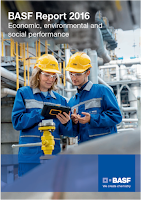For the report in full please click here and for the previous summary please go to K+S annual report 2015 and to find out more about them then please click on analysis of K+S 2016.
When we take a look at the financial statement below then that is not a pleasant read. The revenue dropped by around -18% and this in a year when the Legacy project should have opened up the doors and started to generate a bit of revenue. Three issues were raised: Mild winter, low potash prices and Werra plant out of production. In the end they still managed to come out with a tiny profit of 0.9 € per share which means that they should have paid out 0.45 € per share but they decided to pay out even less with only 0.3 € per share.
Conclusion: This year is the important year for K+S they need to show us the shareholders that the investment in Canada was worth the money. I think that they can do this. Each time I report something on K+S I remind myself of how I should have sold them when there was a price offered on them a long time ago. One way or the other as an investor one needs to build up a set of responses to do when certain situations appear. I very clearly know what to do in my next take over situation. I will remain as a grumpy shareholder for now.









































